Archive
2021
KubaParis
THE THINGS I DO POSSESS SOMETIMES THEY OWN ME TOO

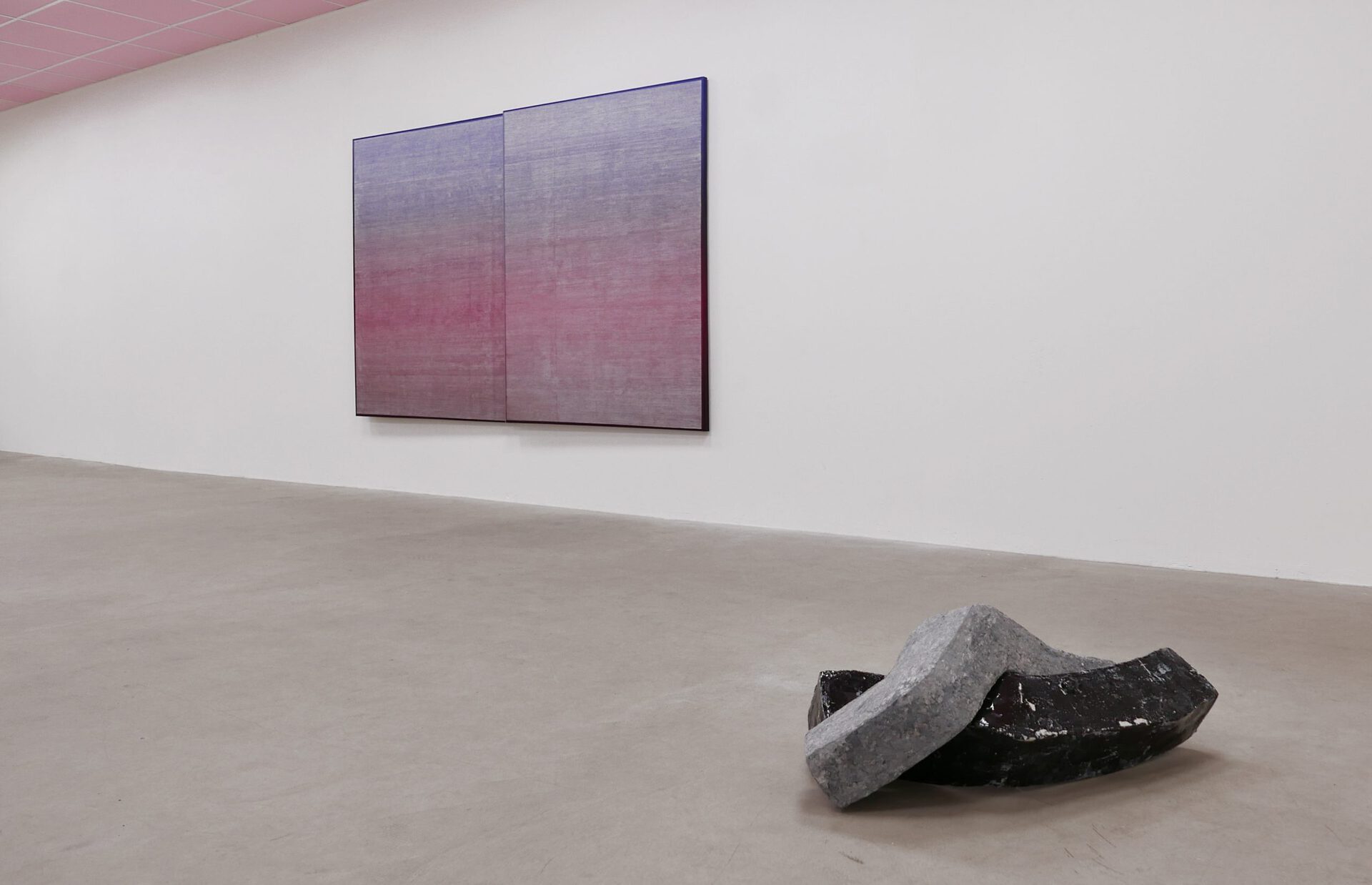
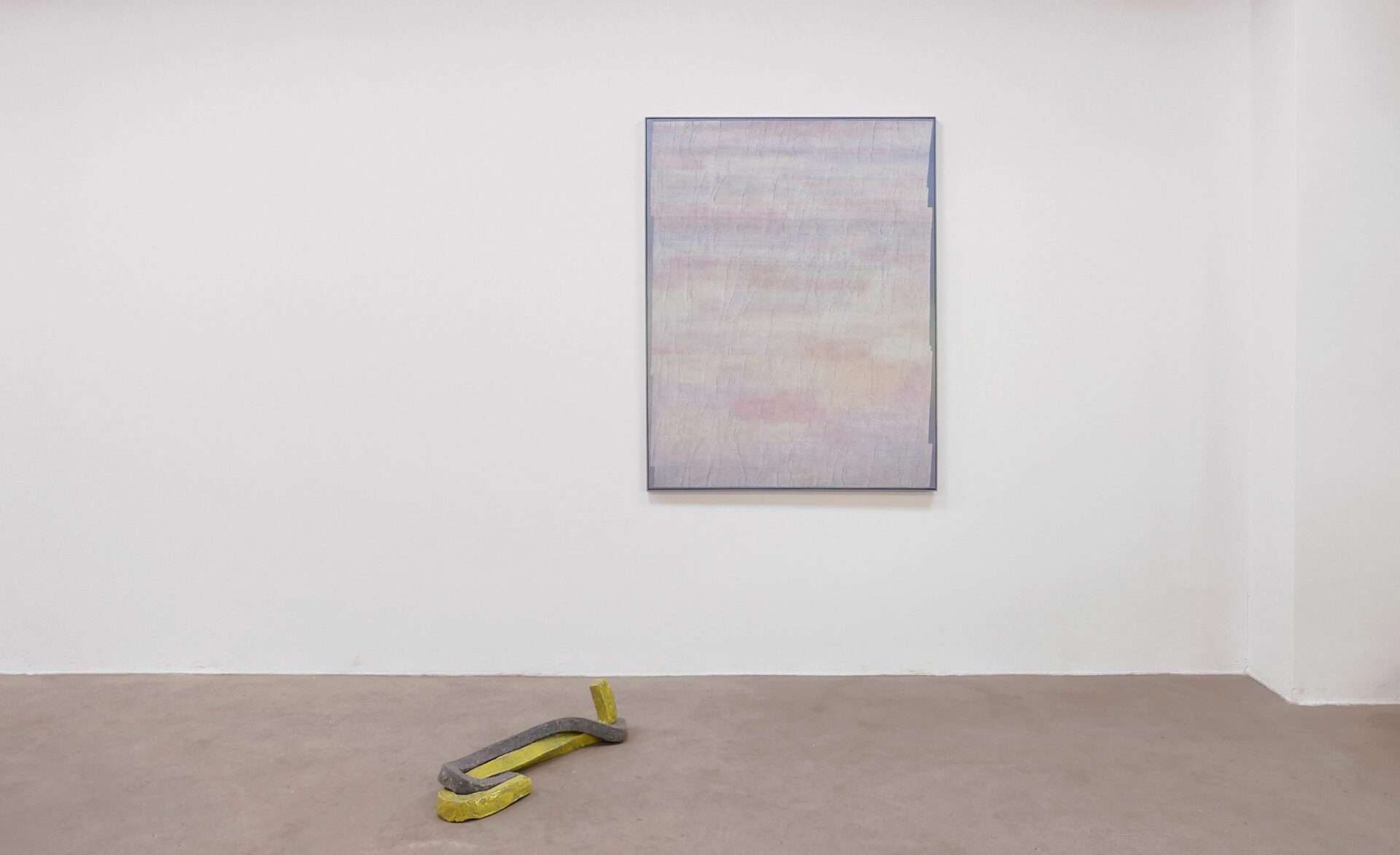
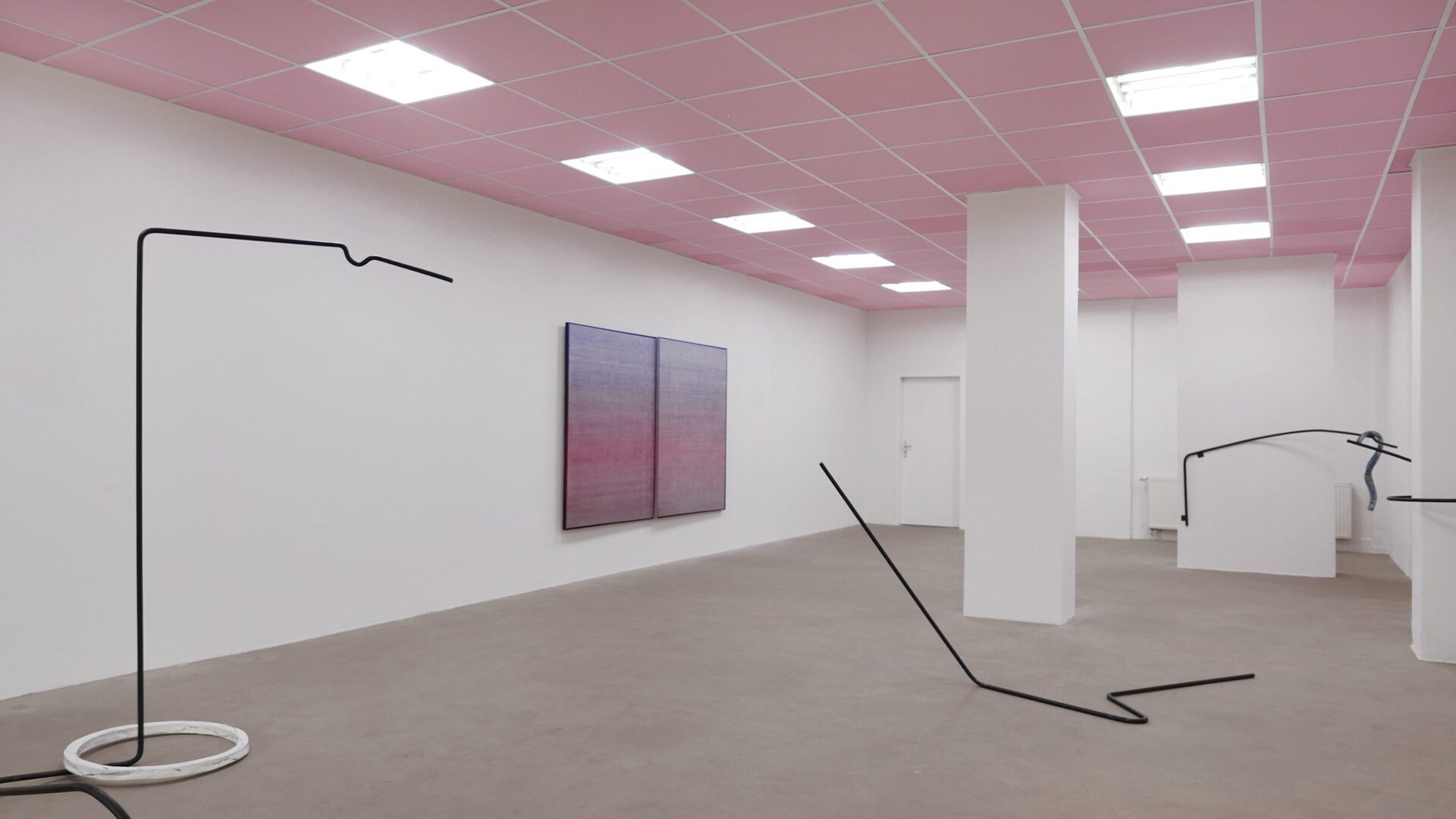

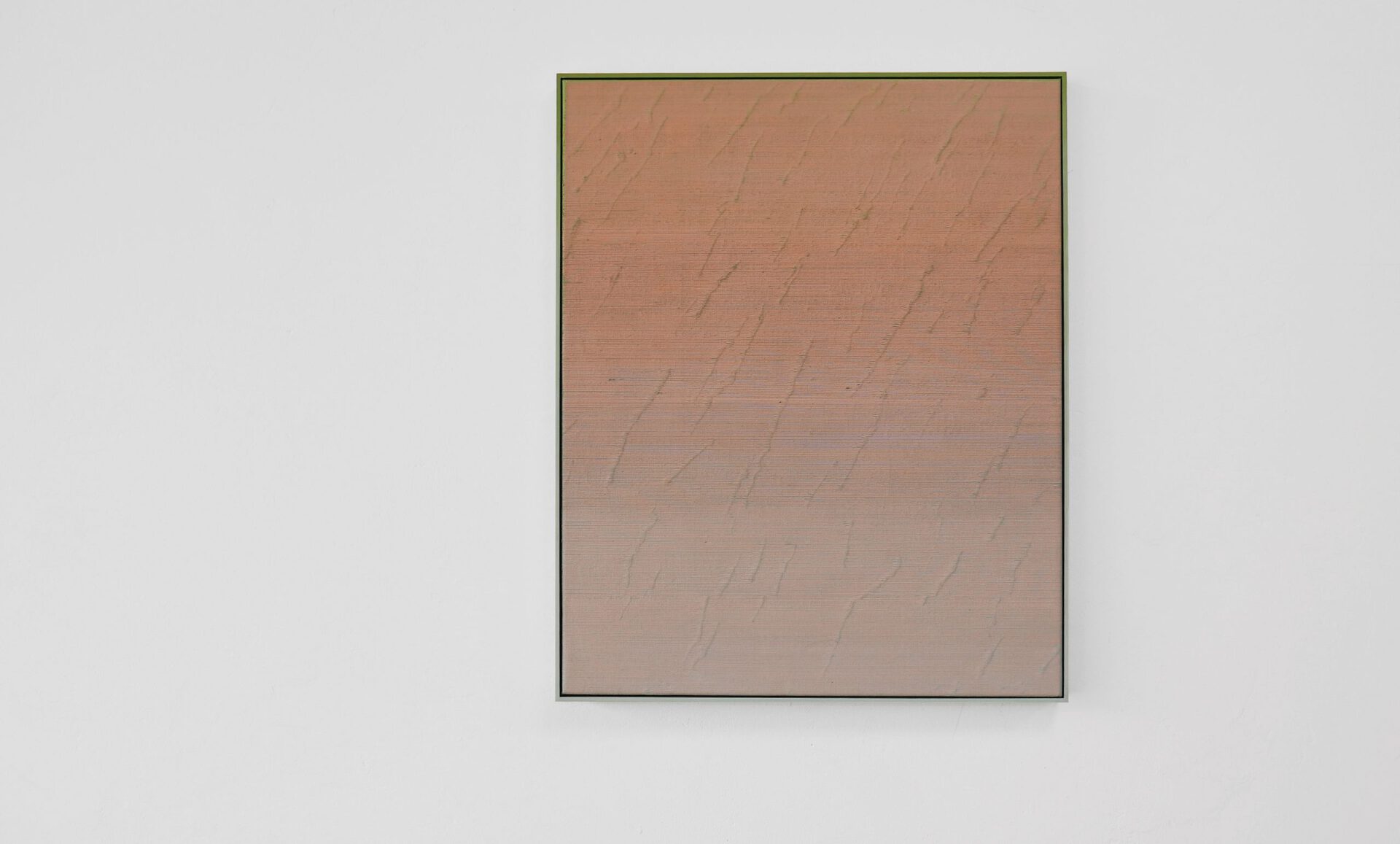
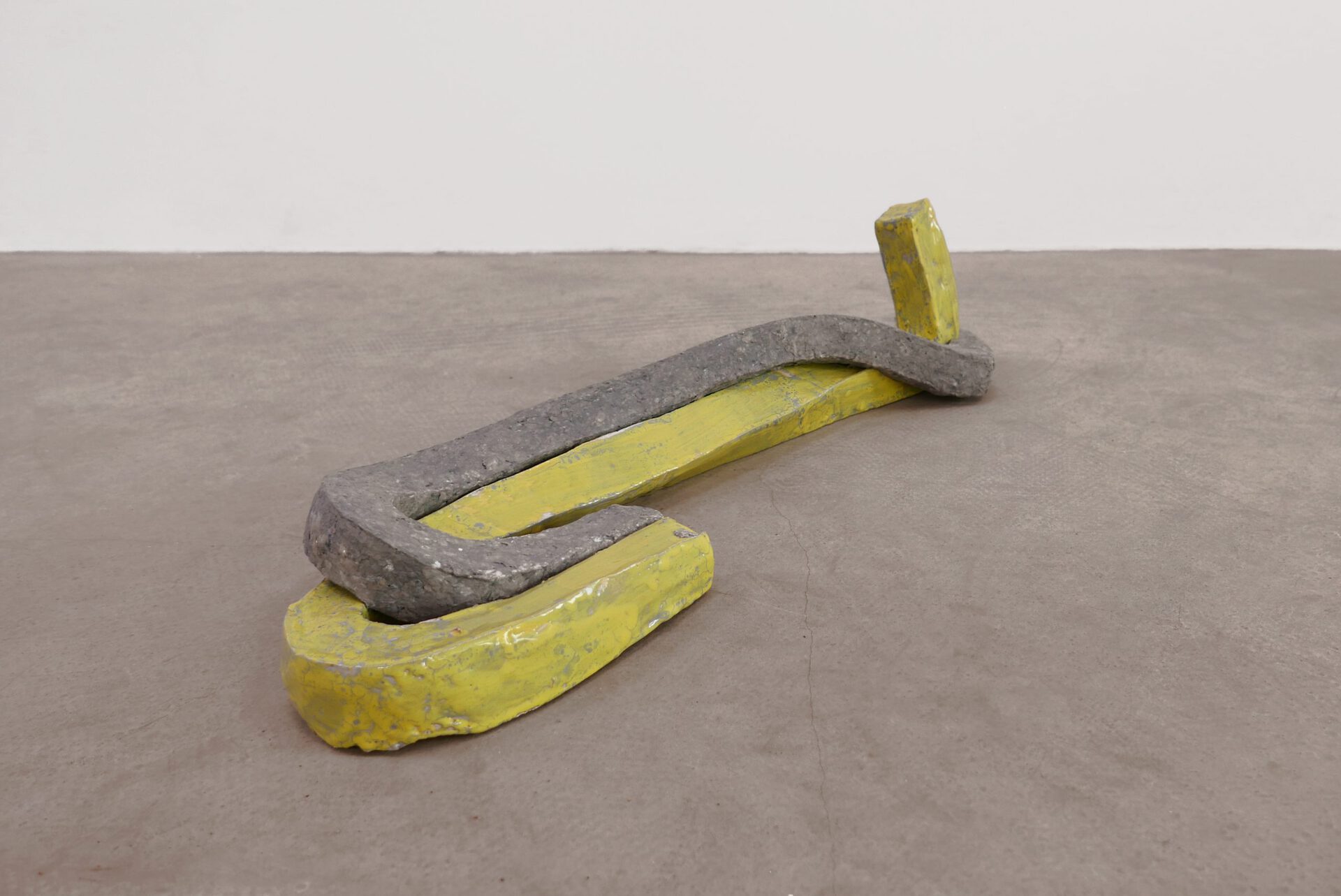
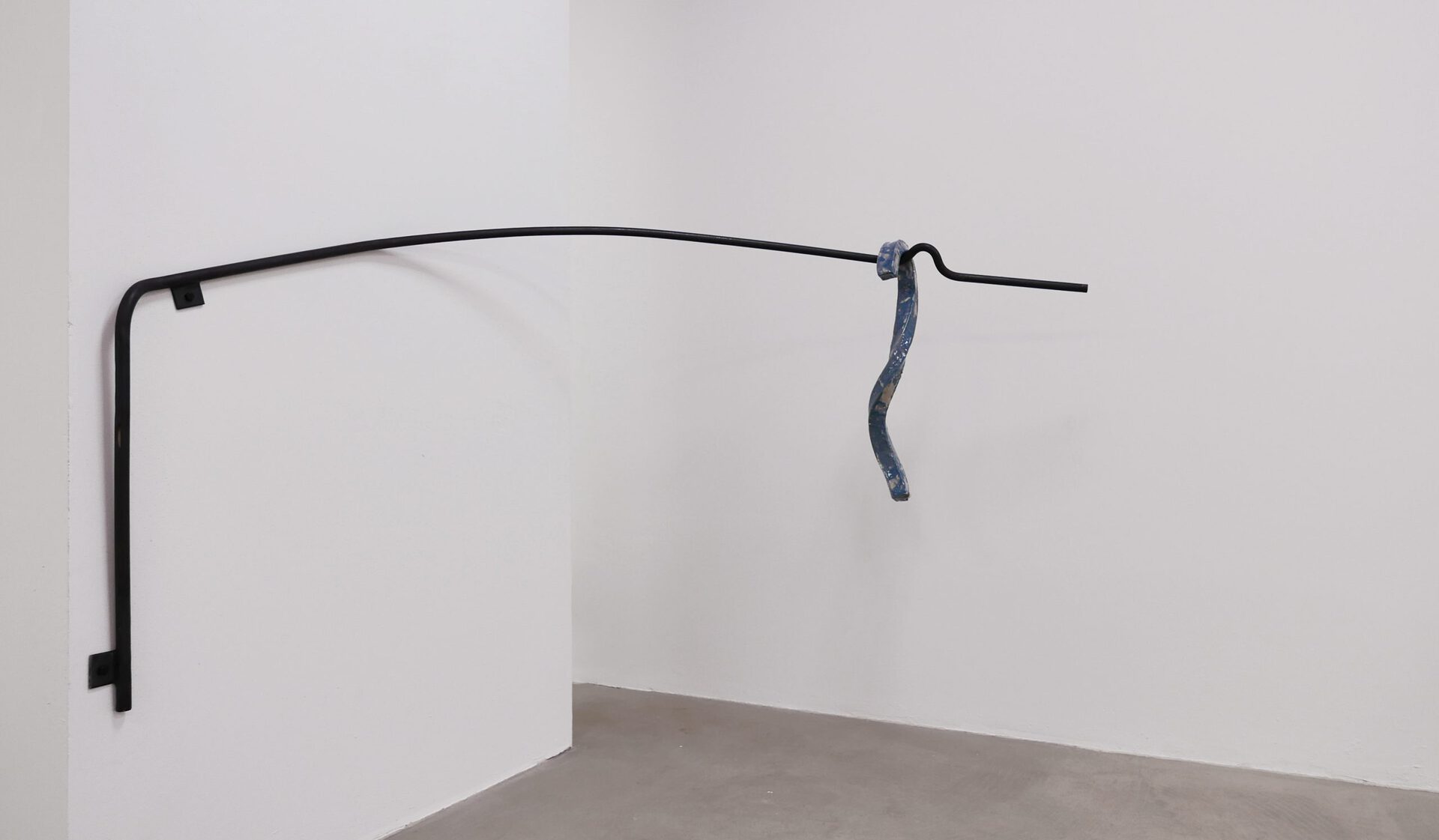
Location
Galerie Stephanie KellyDate
19.05 –18.06.2021Curator
Claudia Kleiner, Nina SchwarzenbergerPhotography
Kerstin FlascheSubheadline
With the exhibition "THE THINGS I DO POSSESS SOMETIMES THEY OWN ME TOO", the Stephanie Kelly Gallery is showing the works of Berlin artist Lisa Tiemann and Dresden artist Claudia Kleiner. Tiemann's sculptures, which seem to have a life of their own, meet Kleiner's paintings, which carefully build up line by line into a whole. Both artists occupy themselves intensively with their materials, shaping, bending, painting and adopting their idiosyncrasies, leaving them their power to act. A question arises: To what extent does the artist control her work or does it control her in the end?Text
With the exhibition "THE THINGS I DO POSSESS SOMETIMES THEY OWN ME TOO", the Stephanie Kelly Gallery is showing the works of Berlin artist Lisa Tiemann and Dresden artist Claudia Kleiner. Tiemann's sculptures, which seem to have a life of their own, meet Kleiner's paintings, which carefully build up line by line into a whole. Both artists occupy themselves intensively with their materials, shaping, bending, painting and adopting their idiosyncrasies, leaving them their power to act. A question arises: To what extent does the artist control her work or does it control her in the end?
Claudia Kleiner
Fine lines gradually build up into a structure, flickering before the human eye and allowing the foreground to waft like a light veil in front of the background.
On the one hand, Kleiner's pictures resemble prints, but on the other hand they play with a subtle haptic and allow us viewers to jump between the foreground and background of the picture. Like a light curtain in the wind, a thin net or a fine wall of water, what is behind seems to want to veil or play around. Her series title Weaving suggests a textuality. Does she allude to the background of the canvas? The implied folds, small disruptions of the continuous lines, at least hint at it. Then there is Starving Spring, whose finest pastel tones are gently laid on the canvas. Disco tropical, on the other hand, is full of unusual dark colour fields and contrasts. Their overlays seem to have grown sensitively and ultimately they are: they subtly break the two-dimensionality and build up a nebulous space behind it through fine lines.
A central aspect of the working process in Claudia Kleiner's works is tranquillity. Her works are created line by line and only unfold their effect after the last stroke has been completed. Colour and materiality are deliberately chosen, the veil that ultimately results from parallelism is merely assumed in advance. In the constant, identical movements, an entity morphs into a whole in the mass, and yet each line reacts in its own way, remains singular in the close-up view, defiantly accumulates the applied paint in one place before it continues to run finely, resembling a thread, in another. On the one hand, this results in a meditative, unrelenting processuality in her work; on the other hand, small welcome interventions arise that set the canvas in motion.
The narrative space of Claudia Kleiner's works consists of two levels: Up close, a constantly generating, almost Sisyphus-like structure whose construction line by line draws the artist into the process; from a distance, a dreamlike space, diffusely recognisable perspective. One catches oneself wanting to lift the veil and yet one is in the knowledge of wanting to look at the picture as it is, this way and no other.
Lisa Tiemann
How do you tell a touch?
Winding lines, nestling bodies, bends and curves seemingly surrendering to chance. Lisa Tiemann's objects made of ceramics and papier-mâché from the work group "COUPLES" are capable of possessing a life of their own. This becomes visible, on the one hand, through the deliberate combination of two similar materials that are only suspected at first glance, and, on the other hand, through the inherent natural behaviour of the material, the marbling and craquelure of the glaze and, again, in their unity through the sensitive, almost cautious touches to the floor on which they lie.
Whereas the minimalists of the 1960s had to put up with the reproach of antropomorphism, Tiemann deliberately reintroduces it. Seemingly a not unavoidable association with the human, which is already found in the title of the works, we suspect an intertwined couple that nestles, fights, even repels each other and yet always remains connected. It is the movement of the objects, frozen in stillness, in which we find ourselves.
The process, the result of which we as recipients now see in front of us, constantly resonates in Tiemann's works. In a retrospective, so to speak, we observe the artist's negotiation in her creative process, but also the effect of the material itself - both components tell us their story here, which was both intentional and left to chance itself.
The starting point are drawings, strokes on paper, which then become a spatial structure, take shape and content and finally want to tell us their own story, here: on a thread of continuity running through the space, as if their narrative had a temporal sequence or parallelism. But much more they are negotiations, observations of movement and displacement; of encounters that were planned on the one hand and yet left to their own devices in their outcome.
Tiemann therefore gives the material a life of its own. Although she prescribes the beginning of the design, she ultimately hands back a power of action to the clay and papier-mâché, allows for changes and opens up a conversation between matter and fabric, between object and herself as an artist.
The exhibition is supported by the Cultural Foundation of the Free State of Saxony, the state capital Dresden and the Office for Culture and Monument Protection Dresden.
Nina Schwarzenberger